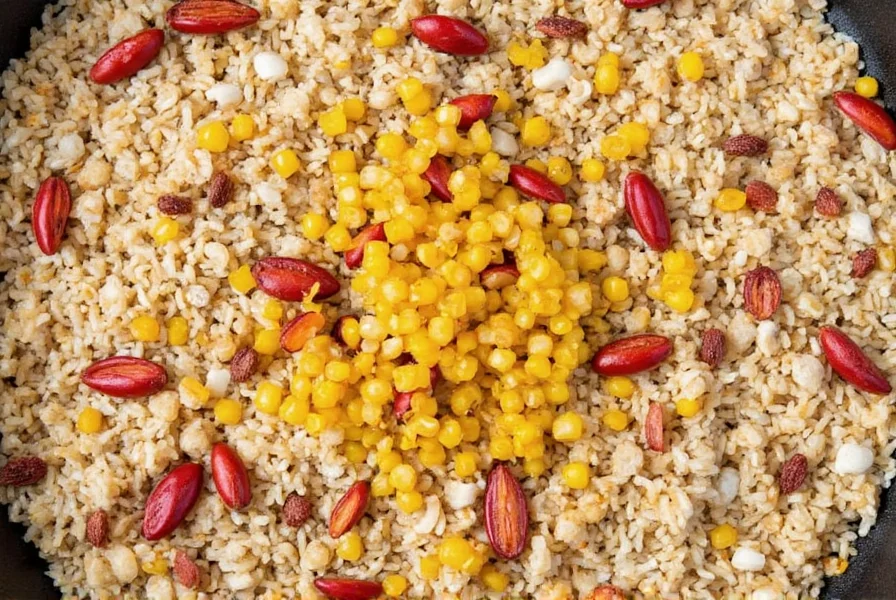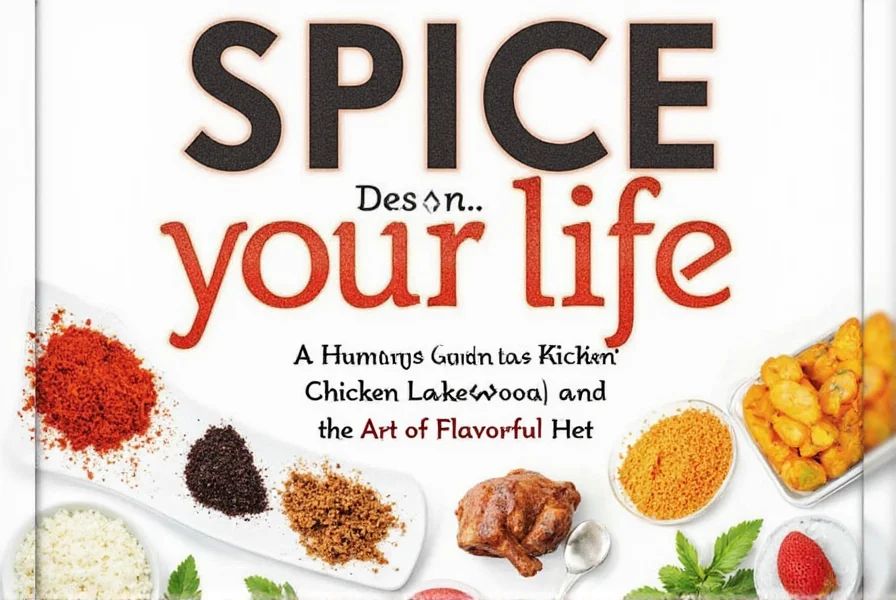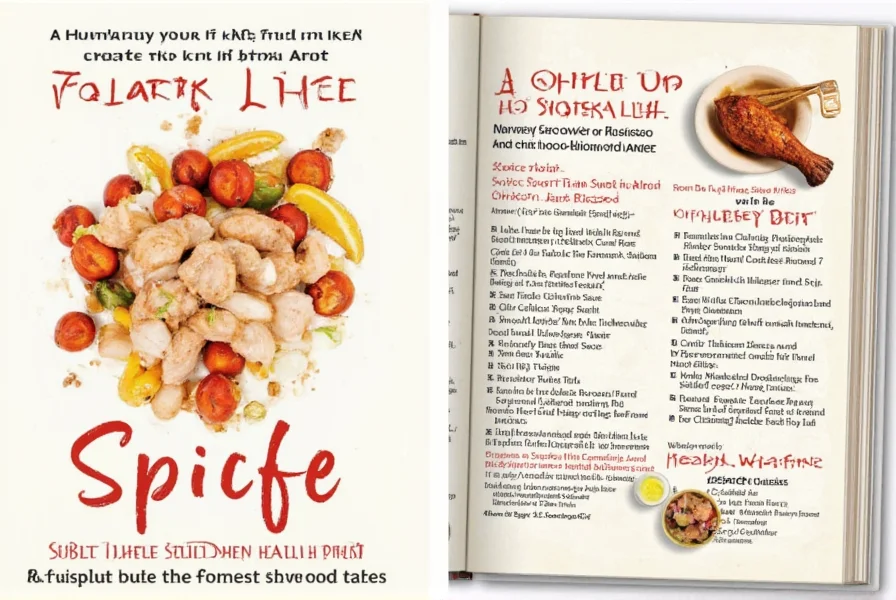Spice Up Your Life: A Humorous Guide to Kickin Chicken Lakewood and the Art of Flavorful Heat
If you've ever wondered why some dishes make your taste buds sing while others just hum along, you're not alone. Today, we're diving headfirst into the world of spice — with a special focus on the Kickin Chicken Lakewood. Yes, that's right. We're combining humor, heat, and hearty flavor in one mouthwatering post.
Table of Contents
- What is Kickin Chicken Lakewood?
- Spice Basics: From Mild to Wild
- 5 Hilariously Spicy Recipes Using Kickin Chicken Lakewood
- Buying Guide: Finding the Perfect Spice Blend for You
- Storing & Seasoning Like a Pro
- Health Perks of Spices (Yes, They’re Real!)
- Conclusion: Let the Fire Burn Brighter!
What is Kickin Chicken Lakewood?
You may have heard whispers around town or seen it flash by on a food truck menu — but what exactly is Kickin Chicken Lakewood? Well, imagine your average grilled chicken breast infused with a blend of spices so fiery and fragrant that it makes you question every life decision leading up to that first bite.
This dish hails from Lakewood, Colorado, and it’s become something of a local legend. It combines traditional American flavors with a bold, spicy twist that turns a humble chicken breast into a culinary adventure.
But here’s the kicker — it’s not just about heat. The seasoning includes a balance of smoked paprika, cayenne, garlic powder, and a touch of citrus zest to keep things interesting. Think of it as a flavor rollercoaster with dips, twists, and a few loop-de-loops thrown in for good measure.

Spice Basics: From Mild to Wild
To truly appreciate the beauty of Kickin Chicken Lakewood, we need to brush up on the basics of spice. Not all heat is created equal, and knowing your Scoville units from your flavor profiles can turn you from a backyard griller to a full-on flavor wizard.
Understanding Spice Levels
| Spice Level | Scoville Heat Units (SHU) | Examples |
|---|---|---|
| Mild | 0–1,000 | Peppercorns, Paprika |
| Medium | 1,000–30,000 | Jalapeño, Serrano Peppers |
| Hot | 30,000–100,000 | Cayenne, Thai Chilies |
| Super Hot | 100,000+ | Habanero, Ghost Pepper |
The Kickin Chicken Lakewood sits comfortably in the medium to hot zone, thanks to its use of cayenne and chipotle powders. But don’t worry — it’s more like a spicy bear hug than a face punch.
Flavor Profiles Matter Too
Spice isn’t just about how much your eyes water; it’s also about depth and complexity. Some spices add smokiness (like smoked paprika), others bring brightness (citrus zest or lemon pepper), and a few offer earthy undertones (like cumin).
The best blends combine multiple elements for a layered effect. And that’s exactly what makes the Kickin Chicken Lakewood so special — it doesn't just slap you with heat; it seduces you with layers of flavor.
5 Hilariously Spicy Recipes Using Kickin Chicken Lakewood
Ready to take the plunge? Here are five delicious (and slightly ridiculous) ways to enjoy the Kickin Chicken Lakewood:
- Spicy Wrap Wreckage: Toss shredded kickin chicken into a flour tortilla with avocado, mango salsa, and a dollop of sour cream. Warning: May cause spontaneous dancing due to flavor explosion.
- Lakewood Nacho Average Nachos: Top tortilla chips with melted cheese, shredded chicken, pickled jalapeños, and fresh cilantro. This one’s guaranteed to be a crowd-pleaser… or at least a loud cough-inducer.
- The Inferno Sandwich: Slap your grilled chicken on a toasted brioche bun with spicy mayo, lettuce, and tomato. Bonus points if you eat it outside while pretending to be a superhero fighting off villains made entirely of ketchup packets.
- Fiery Fried Rice: Stir-fry rice with peas, carrots, soy sauce, and chunks of your favorite kickin chicken. Don’t forget to crack an egg in there because eggs fix everything, even mild heartburn.
- Buffalo Chicken Mac ‘n’ Cheese: Mix shredded chicken into creamy cheese sauce and pasta. Bake until golden. Serve with a side of ice cream to balance out the inferno in your mouth. Optional: play dramatic music during preparation for added flair.
Buying Guide: Finding the Perfect Spice Blend for You
If you’re ready to recreate that Kickin Chicken Lakewood vibe at home, you’ll want to know which spices to reach for. Let’s break down the essentials:
Top Spice Blends for Home Use
| Product | Features | Best For | Suitable Occasions |
|---|---|---|---|
| Mrs. Dash Extra Spicy | No salt added, packed with chili flakes and paprika | Healthy eaters looking for flavor without sodium | Weeknight dinners, quick marinating |
| Bold Heat Cajun Seasoning | Smoky, garlicky, and bold | Those who love Southern-style spice | BBQs, seafood boils |
| Trader Joe’s Fiery Fiesta Blend | Great value, perfect for taco nights | Spice newbies looking to explore | Family meals, potlucks |
| SpiceHunter Kickin Blend | Professional-grade heat with balanced flavor | Cooking enthusiasts and chefs | Dinner parties, date night meals |
If you're aiming for the authentic Kickin Chicken Lakewood experience, look for blends with smoked paprika, garlic, and a solid dose of cayenne. Alternatively, create your own custom mix using these base ingredients:
- 1 tbsp smoked paprika
- 1 tsp cayenne pepper
- ½ tsp garlic powder
- ½ tsp onion powder
- ½ tsp dried lime zest
- 1 tsp brown sugar (to balance the heat)

Storing & Seasoning Like a Pro
You’ve got your spices, but now what? Storing them properly can make or break your culinary creations.
Pro Tips for Spice Storage
- Keep it cool and dark: Store your spices away from sunlight and heat sources. A kitchen cabinet is ideal.
- Air-tight containers: Oxygen is the enemy of flavor. Seal those jars tight!
- Label everything: Because “that red stuff” gets confusing after six months.
- Use within a year: Most ground spices lose potency after 6–12 months.
Seasoning Techniques to Impress Friends and Family
- Dry rub like a boss: Coat your meat in oil first, then apply the spice mixture evenly.
- Marinate overnight: Give flavors time to mingle like they’re at a very spicy cocktail party.
- Taste test early and often: Adjust heat levels before cooking to avoid unexpected fireballs.

Health Perks of Spices (Yes, They’re Real!)
Let’s talk about the unsung heroes of the kitchen — spices aren’t just flavor bombs; they’re also health boosters. Many common spices have been shown to:
- Improve digestion: Ginger, cumin, and cinnamon help regulate gut health.
- Boost metabolism: Capsaicin in chili peppers increases metabolic rate temporarily.
- Reduce inflammation: Turmeric and black pepper work together to fight inflammation naturally.
- Promote heart health: Garlic and onion powder contain compounds that support cardiovascular function.
So next time you sprinkle that Kickin Chicken Lakewood seasoning on your meal, remember — you're not just eating spicy; you're eating smart!
Conclusion: Let the Fire Burn Brighter!
Spice is more than just a way to show off your pain tolerance — it’s an art form, a science experiment, and sometimes, a cry for help when you burn the rice again. Whether you’re diving into the iconic Kickin Chicken Lakewood or experimenting with your own homemade blends, embracing spice means embracing flavor in all its glorious, mouth-tingling forms.
Remember: spice is personal. One person’s “mild” is another’s “emergency trip to the fridge.” So go ahead — find your level, crank up the heat, and maybe invest in a cooling beverage or two. After all, life’s too short for bland food.












 浙公网安备
33010002000092号
浙公网安备
33010002000092号 浙B2-20120091-4
浙B2-20120091-4